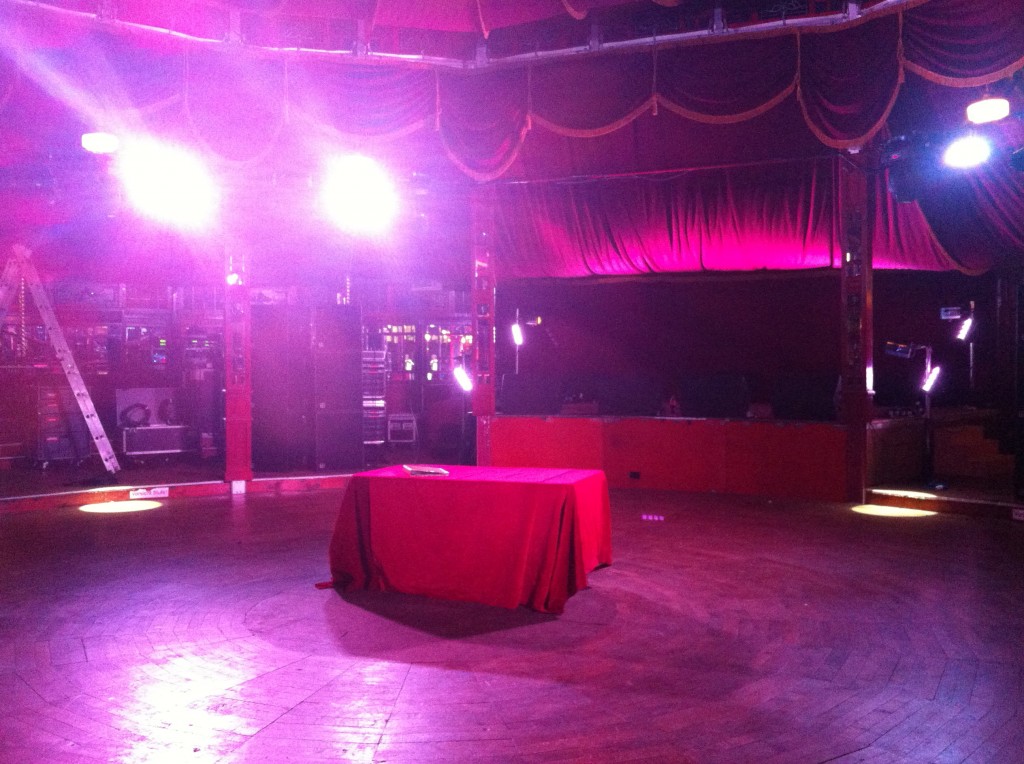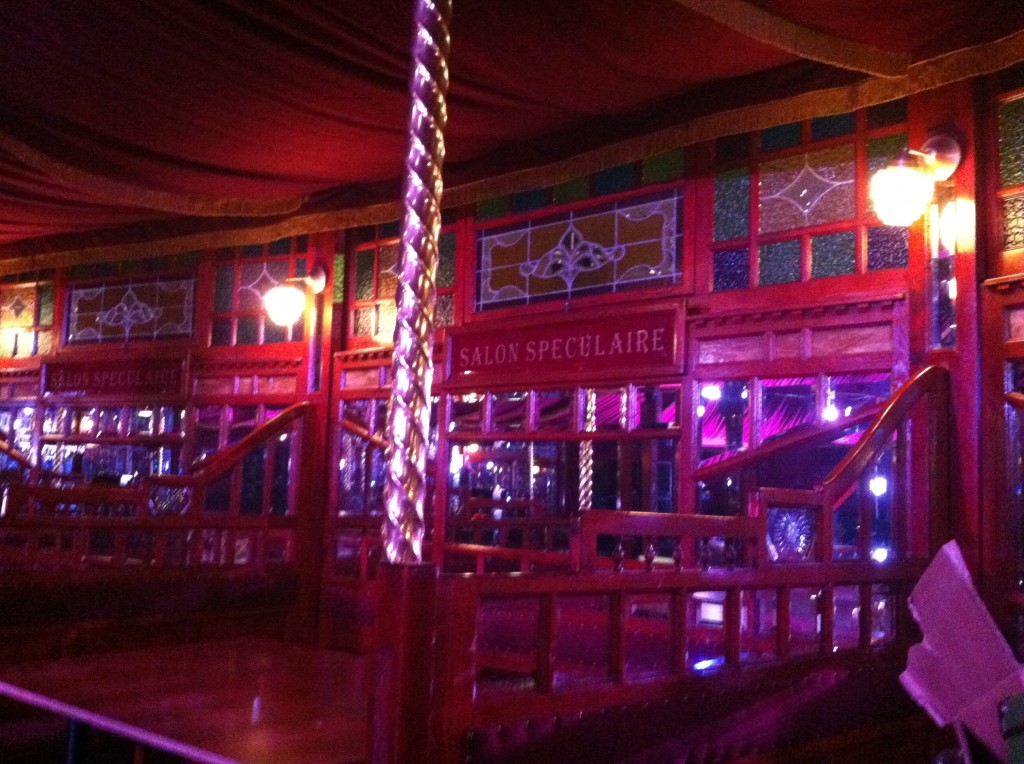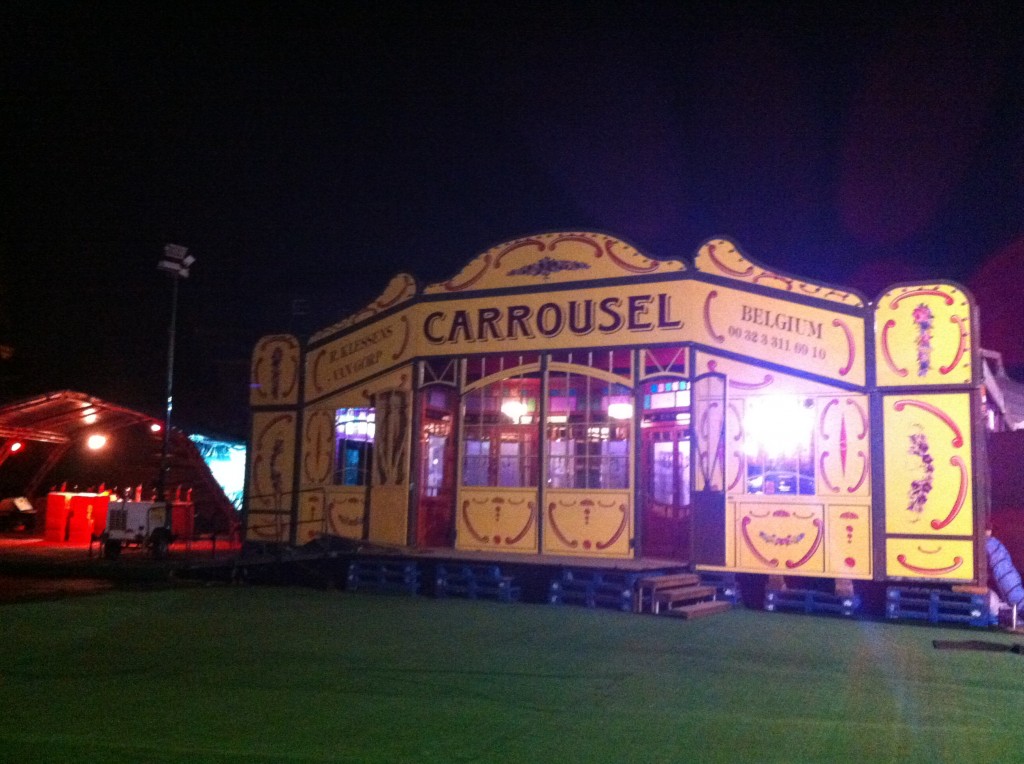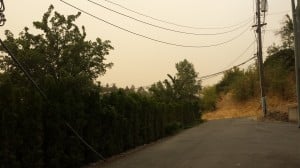Last week I had the honour to conduct a handfasting in Dumfries, for two of the most wonderful people it’s been my pleasure to meet here in this region (or, indeed, anywhere). The whole event was amazing, but the venue: that was spectacular. It was a Spiegeltent, a construction of wood and canvas, reminiscent of a circus tent, but designed to hold entertainments of all kinds.
Spiegeltents originated in Belgium, and were built between the late 1800s and the early 1900s. As well as a stage, they have a large circular performance or dance space, which is where our ceremony was held.

This circular space is surrounded by booths, lined with mirrors and topped by stained glass:

The only natural light in the entire space comes from the clouded windows in the front doors, and through the filtering colours of the stained glass. The effect of this combination of occluded and coloured light, the lighting rigs in the ceiling, and the mirrors all around is of a space which could be anywhere – literally anywhere.
Yet in this enclosed, inward-facing space I still had a strong sense of what it was, in and of itself, even as it could have been anywhere. It was a space set aside, a space of artifice and glamour, of performance and spectacle; it was a portal into another world – a world of our own creation.
It reminded me rather of the TARDIS, in that it was bigger on the inside than it looked on the outside, and it felt as though it could transport us to any point in time or space. I would not have been surprised to open the doors to find myself in another country, or on the Moon, or in another solar system entirely.
In retrospect, it also strikes me that the Spiegeltent functioned rather like the kind of circle that Witches and Mages cast for ritual and for magic(k)al workings. It kept out anyone unwanted, both in person, as guests had to show their invite at the door, and through preventing prying eyes from seeing what was happening inside. It contained the working in the approved of circular form, through the wooden and canvas and glass facts of its construction, and contained the attention of those taking part, by focusing them towards the centre of the space.
I have mixed feelings about casting a circle. It’s a trigger for my brain and my mind to go into ‘ritual mode’; but my goal is also to treat each daily occurrence as a ritual of creation, maintenance or destruction. It creates sacred space where there was none before; but my goal is also to remember the sacredness of all things. It trains my focus inward towards my goals and desires and offers me protection from unwanted visitors; but my goal is also to be open to the life of the more-than-human world around me.
Experience tells me that the portal of a cast circle, just like the portal of the Spiegeltent, has its appropriate place and time: those occasions when I seek to go outside of, or deep into the mystical heart of space and time – occasions when my attention, mind and animal instincts need the trigger, the boundary, the focus, and the sense of privacy and safety that a circle provides.
Do you mostly cast a circle – or use some other form of ritual intention or focus – as the setting for your spiritual work, or do you mostly go out and about in your local environment? I invite you to try an experiment: whichever is your usual modus operandi, try the other for a week, and let me know what you notice.













